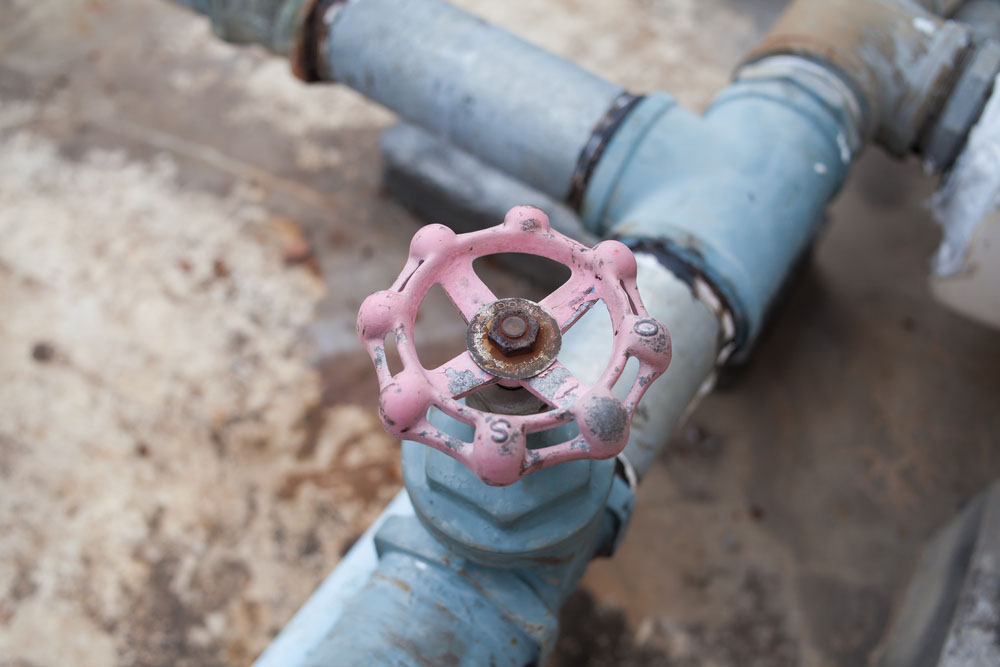Trouble Spots: Common Water Shut-Off Valve Problems

When you need to stop the flow of water to a specific plumbing fixture or your entire home, the shut-off valve is your first line of defense. These simple valves help prevent major water damage during emergencies and make plumbing repairs more manageable. Like any plumbing component, however, shut-off valves can develop problems over time.
As the go-to plumber in Northridge, CA, Roberts Plumbing Hydro Jet & Rooter explores the typical issues with these devices to help you spot trouble early and avoid bigger plumbing headaches later.
Leaking Valves
One of the most common problems with water shut-off valves is leaking. A valve may leak at the handle or from the connection points. This can happen when internal parts wear out or the packing nut loosens over time. Even a slow drip can waste water and cause damage to surrounding areas if left unchecked. If you notice moisture or corrosion around your shut-off valve, it’s important to have it checked by a capable Northridge plumber. In many cases, tightening the packing nut can solve the problem, but sometimes the valve may need to be replaced entirely.
Stuck or Hard-to-Turn Valves
Many homeowners find out the hard way that their shut-off valves won’t budge when they need them most. Valves that haven’t been used in years can seize up due to mineral buildup or corrosion. This makes them extremely difficult to turn or completely stuck in place. It’s a good idea to test your shut-off valves once or twice a year to ensure they move freely. Applying a little plumber’s grease can help keep them operational. If a valve stays stuck, it’s often safer to replace it rather than forcing it and risking a break.
Worn-Out Washers and Seals
Inside every shut-off valve are small washers and seals that help stop the flow of water when you close the valve. Over time, these parts can wear down, dry out, or crack. When that happens, the valve may not shut off completely, allowing water to trickle through even when it appears closed. This can lead to wasted water and unexpected leaks. If you notice water still running after you’ve closed a valve, worn washers or seals could be the cause. Professional plumbing services can usually replace these parts or install a new valve if needed.
Corrosion and Rust
Corrosion is a common problem, especially for older metal shut-off valves. Moisture, leaks, or condensation can cause metal parts to rust and weaken. Corroded valves are more likely to fail or break when you try to operate them. If you notice rust or greenish buildup on your valves, it’s a sign of corrosion that should not be ignored. Letting a skilled technician from your trusted plumbing company replace old, corroded shut-off valves with newer, corrosion-resistant models is a smart move to prevent water damage.
Improper Installation
Sometimes, problems with shut-off valves come from poor installation. A valve that wasn’t fitted properly may develop leaks or may not close fully when needed. DIY installations without the right tools or materials can lead to loose connections or damaged threads. If you’re installing or replacing a shut-off valve, it’s best to hire licensed and trained Northridge plumbers to make sure it’s done correctly and up to code.
Need Quality Plumbing Solutions? We Can Help
Roberts Plumbing Hydro Jet & Rooter is a trusted provider of top-notch plumbing services in Northridge and the surrounding areas. From simple repairs to complex installations, our team of experienced plumbers has the expertise and know-how to handle any plumbing issue you may encounter. We’re proud to be a locally owned and operated business that has been in operation for over 25 years now, and we’re committed to bringing exceptional customer service and high-quality workmanship to every job we take on. Call us today or complete our online form to request a service visit.




